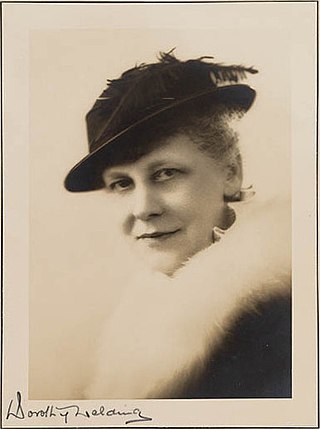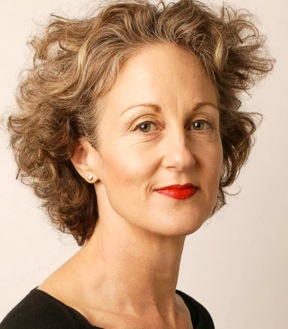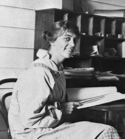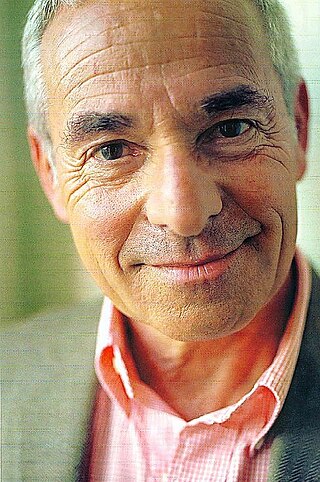Justine Clark is an architectural editor, writer, speaker and researcher, based in Melbourne, Australia. She is the editor of Parlour, a former editor of Architecture Australia, and co-author of Looking for the Local: Architecture and the New Zealand Modern.

The Sydney Technical College, now known as the TAFE New South Wales Sydney Institute, is a technical school established in 1878, that superseded the Sydney Mechanics' School of Arts. The college is one of Australia's oldest technical education institutions.
The Australian Architecture Association (AAA) was set up in 2004 as a not-for-profit organisation to promote the understanding of both local and world architecture in Australia. The Chicago Architecture Foundation (CAF) is used as the model for the development of the organisation.

Alexander Popov is an Australian architect working in the Late 20th Century Modern style.

The Australian Institute of Architects is the professional body for architects in Australia. The post-nominals of FRAIA (Fellow) and RAIA continue to be used. The Institute supports 14,000 members across Australia, including 550 Australian members who are based in architectural roles across 40 countries outside Australia. SONA is the national student-membership body of the Australian Institute of Architects.

Florence Mary Taylor was the first qualified female architect in Australia. She was also the first woman in Australia to fly in a heavier-than-air craft in 1909 and the first female member of the UK's Institution of Structural Engineers in 1926. However, she is best known for her role as publisher, editor and writer for the influential building industry trade journals established in 1907 with her husband George, which she ran and expanded after his death in 1928 until her retirement in 1961.
Bates Smart is an architectural firm with studios in Melbourne and Sydney, Australia. Founded in 1853 by Joseph Reed, it is known as one of Australia's oldest architectural firms. Over the decades, the firm's multidisciplinary practices involving architecture, interior design, urban design, strategy, sustainability and research, have been responsible for some of Australia’s most well-known and loved buildings.
Philip J. Goad is an Australian academic, currently serving as Professor of Architecture in the Faculty of Architecture, Building and Planning at the University of Melbourne. He is also a former President of the Victorian Chapter of the Royal Australian Institute of Architects. Phillip became Chair of the Heritage Council of Victoria in July 2021.
ARM Architecture or Ashton Raggatt McDougall is an architectural firm with offices in Melbourne, Sydney, and Adelaide, Australia. The firm was founded in 1988 and has completed internationally renowned design work. ARM's founding directors were Stephen Ashton, Howard Raggatt, Ian McDougall.
Architecture criticism is the critique of architecture. Everyday criticism relates to published or broadcast critiques of buildings, whether completed or not, both in terms of news and other criteria. In many cases, criticism amounts to an assessment of the architect's success in meeting his or her own aims and objectives and those of others. The assessment may consider the subject from the perspective of some wider context, which may involve planning, social or aesthetic issues. It may also take a polemical position reflecting the critic's own values. At the most accessible extreme, architectural criticism is a branch of lifestyle journalism, especially in the case of high-end residential projects.
Richard Francis-Jones is a highly awarded Australian architect. He is the design director of the Multidisciplinary design practice Francis-Jones Morehen Thorp (FJMT). He is a Life Fellow of the Australian Institute of Architects, an honorary fellow of the American Institute of Architects. and a Member of the Royal Institute of British Architects.

Dr Elizabeth Margaret Farrelly, is a Sydney-based author, architecture critic, essayist, columnist and speaker who was born in New Zealand but later became an Australian citizen. She has contributed to current debates about aesthetics and ethics; design, public art and architecture; urban and natural environments; society and politics, including criticism of the treatment of Julian Assange. Profiles of her have appeared in the New Zealand Architect, Urbis, The Australian Financial Review, the Australian Architectural Review, and Australian Geographic.
Douglas Burrage Snelling (1916–1985) was an Australian architect and furniture designer.
Corbett Marshall Lyon is an Australian architect, art patron and academic who lives and works in Melbourne. He is a founding director of Melbourne architectural firm Lyons. With partners Carey Lyon, Cameron Lyon, Neil Appleton, Adrian Stanic and James Wilson he has designed many award-winning institutional and public buildings in Australia.

Beatrice May Hutton (1893–1990), also known as Bea Hutton was an Australian architect. On 30 October 1916, she became the first female to be accepted into an institute of architects in Australia. This followed the rejection of earlier female applicants, including Florence Taylor in 1907, on the grounds of being female.
Karen Burns is an architectural historian and theorist based in Melbourne, Australia. She is currently a senior lecturer in architecture at the Melbourne School of Design, University of Melbourne.
Naomi Stead is an architectural academic, scholar and critic, based in Melbourne, Australia. She is currently the Director of the Design and Creative Practice Enabling Capability Platform at RMIT University, Australia.

George Freedman was Australia's leading Interior Designer/ Interior Architect from 1970 until a younger generation became prominent in Sydney during the 1990s. Born in New York, where he studied architecture at Syracuse University, Freedman arrived in Sydney in 1968 and later designed many prestigious interiors, often including custom-made furniture. His notable interior schemes included executive suites for the Bank of New South Wales (1970) and the State Bank of New South Wales (1985), cultural institutions including Sydney's Powerhouse Museum, Museum of Applied Arts and Sciences, businesses, government premises, restaurants, residences and historic monuments, including a refurbishment of the Queen Victoria Building (2009).
Julie Willis is an Australian architectural historian and academic. She is currently Professor of Architecture and Dean of the Faculty of Architecture, Building and Planning at the University of Melbourne.
Davina Gainor Jackson is a Sydney based international writer and editor of books and websites promoting satellite technologies for urban development and recording pan-Pacific architectural and maritime history. She is a fellow of the Royal Society of Arts and the Royal Society of New South Wales.







